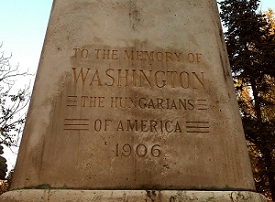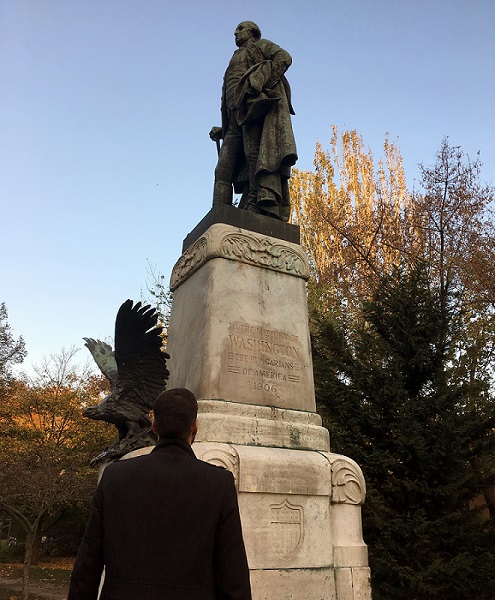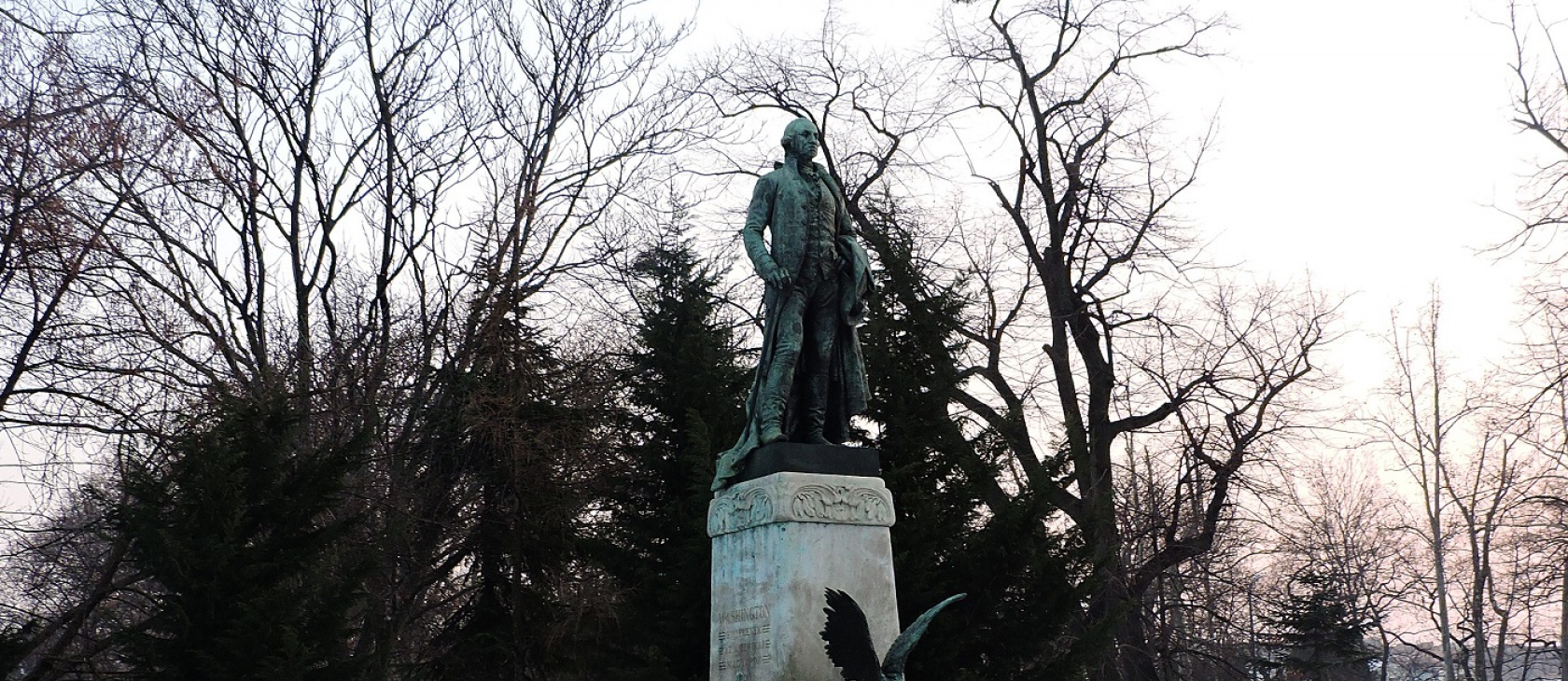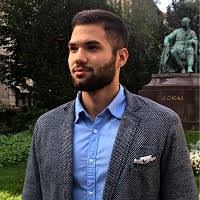The year 2017 saw a raging debate in the United States over figures from its history. This especially concerned whether statutes of even the most important figures in U.S. history should be left standing, if those people held views that society now disapproves. In the U.S., this debate has left no figure unscathed, including George Washington himself. Therefore, it may surprise Americans to know that a statue of Washington stands proudly in the heart of Budapest, Hungary.
How did a statue of George Washington come to stand in Budapest?
On December 4, 1851, Lajos Kossuth – perhaps the most famous Hungarian politician – landed in the harbor of New York City. More than 200,000 people awaited for the arrival of the one dubbed the “Great Hungarian.” The New York Times wrote that no similar event in national history could compare to his visit. After his arrival, Kossuth stayed in the U.S. for seven months to gain political and diplomatic influence for his motherland. So successful were his efforts that newspapers compared him to great patriots like Lafayette and Washington.

In 1902, to honor this great Hungarian freedom fighter, a group of Hungarian-Americans started building a monument to Kossuth in Cleveland. At the same time, Hungarian-American leaders called for greater unity between the two nations – and they hoped a statue of George Washington could be constructed in Hungary, as well. In 1904, Count Albert Apponyi welcomed the idea in Budapest. “We have hearty sympathy with this gigantic commonwealth, which has achieved liberty for all time, a liberty which makes us in Europe feel safer,” he said, adding that the good example gladded even “lands where liberty is scarcely known.”
“We feel safer because there is such a country as the United States of America,” Apponyi said. “The freedom of America is one of the safeguards of liberty in old Europe.”
The Hungarian-Americans formed a society called The American Hungarian Federation, led by its first president, Tihamér Kohányi. The group established a committee to fund the building of the statue. Once funding was secured, the committee sought out the best sculptor and the right location for the statue. The monument was completed in 1906 by the Hungarian sculptor Gyula Bezerédi and erected in the largest park in Budapest: City Park. Its exhibition on September 16, 1906 – which was proclaimed “Washington Day” in Hungary – was flawless. Approximately 30,000 people joined the parade on the streets of Budapest. “Mr. Kohányi in his speech praised American institutions and freedom,” the New York Times wrote at the time. “He said Hungarian-Americans were true citizens of the Republic, but would always keep up their love for their native country. Mayor Bauzy of Budapest promised to take good care of the monument, which he said was a splendid evidence of the friendship between two peoples, and hoped it would last forever.”
Musings and misery over monuments
Today, Washington’s statue seems safer in Hungary than in his home country. The pastor of the Liberation Christian Center in Chicago asked Mayor Rahm Emanuel to remove a statue of George Washington, and to stike the names of Washington and Andrew Jackson from their respective city parks. His main argument is that the city should not honor them, because these two presidents owned slaves.
If this critics’ jaundiced assessment of George Washington wins out, it could threaten the ability of any person in the world to hold a rational understanding of U.S. history.
The constant musing about monuments is not restricted to the U.S. but is part of the fabric of every country in the world, including Hungary. Cultures build statues and monuments to pay homage to their history. However, their perception of that history is unstable, as their culture sees the past through the lens of an ever-shifting present. Since the beginning of time, humanity has not just built symbols but sometimes destroyed them, as well. Therefore, contrary to political scientist Francis Fukuyama, “the end of history” did not come in 1989 and will never come about, as it is constantly re-examined.
Even so, this view of the founders, especially George Washington, seems to be far too radical. Washington was the first president of the United States which, in itself, is a milestone of U.S. history – not considering his support for the concepts of liberty, his heroic war record, and his role in so shaping U.S. civic institutions that he earned the title, “the father of his country.” These are the things celebrated by his statue, not his shortcomings. If this critics’ jaundiced assessment of George Washington wins out, it could threaten the ability of any person in the world to hold a rational understanding of U.S. history.
Standing before Washington’s statue in Budapest
When I am standing here in front of this 6.9 meter (approximately 23-feet-high) statue made from marble and limestone, I have to admit that my heart and my mind are confused. Before I saw the statue, I read a great deal about George Washington’s ideas, his actions and values. My mind regards him as a great leader, an advocate of peace and liberty. On the other hand, my heart realized that some of pastor’s words rang true, as well.
Two centuries later, George Washington’s words continue to inspire the best in all mankind – across oceans, across cultures, across eras.
My final conclusion is mixed. The view of colonial society – and all societies – toward slavery was different in Washington’s time than it is in ours; their age reasoned differently about the institution, and therefore, we cannot simply judge him by contemporary standards. Nor should we assess him on this one issue alone. Great men have enduring values which stand the test of time, shining enough light to overpower the darkness of their faults. (And we are too quick to notice this darkness in others, and not the dark streak of intolerance and violence in ourselves.)
Looking at the statue, I just keep repeating two of the best of Washington’s quotations: “Truth will ultimately prevail where there are pains to bring it to light”; and, “Liberty, when it begins to take root, is a plant of rapid growth.”
As a Hungarian political scientist living in a country that still does not enjoy all the liberties of the United States of America, I think the man celebrated in the U.S. and in Budapest’s City Park should not be evaluated based on the pastor’s criteria, but by these two quotations. Two centuries later, George Washington’s words continue to inspire the best in all mankind – across oceans, across cultures, across eras.

(Main photo credit: Dimitris Kamaras. This photo has been cropped. CC BY 2.0.)




